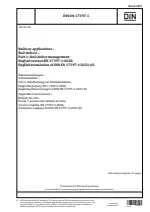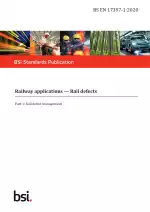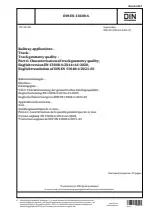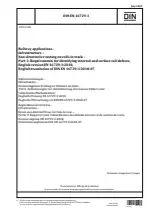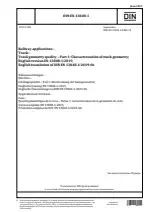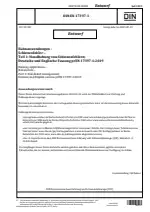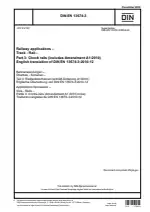Railway Applications - Rail Defects - Part 1: Rail Defect Management
Also Known As:
The DIN EN 17397-1 standard provides guidelines for the management of rail defects in the railway industry. The standard applies to rails that comply with EN 13674-1, EN 13674-2, EN 13674-4, and EN 15689, excluding grooved rails (EN 14811), which require alternative defect management systems.
The purpose of this standard is to ensure the safety of railway operations by controlling the risk of severe accidents caused by internal or surface defects on rails. It specifies the defect management system that the infrastructure manager should use to address these defects effectively. The standard aims to minimize the consequences of rail defects and prevent accidents related to their degradation.
By implementing the guidelines outlined in DIN EN 17397-1, railway companies can establish a systematic approach to identifying, assessing, and managing rail defects. This standard plays a crucial role in enhancing the overall safety and reliability of railway transportation systems.
| Descriptors | Accidents, Checks, Classifications of defects, Damage, Danger of accident, Defects, Definitions, Flaws, Handling, Infrastructure, Internal, Limits (mathematics), Maintenance, Management systems, Permanent ways, Rail safety, Rail transport, Rails, Railway applications, Railway installations, Railways, Risk, Risk assessment, Status, Surface discontinuities, Travel ways, Typus of error, Weldings, Pavements (roads), Sheets, Roadways, Superstructure |
| ICS Codes | 93.100 - Construction of railways |
| Language(s) | English |
| File Size | 66.9 MB |

